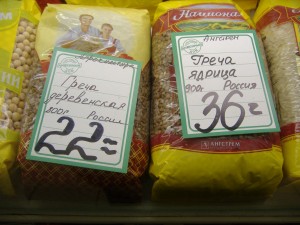And this is what the veteran crop conservationist says:
Gene banks like the SADC gene bank, the Svalbard gene bank, and many others, focus only on collecting and preserving. How can you think you are conserving diversity when the very source upon which the seeds depend is not included? You can capture only so much, and in 100 years it will be useless because the planet will have changed. Perhaps you will be able to incorporate some genetic material into varieties and release them, but who is going to benefit from that? That is the big question.
I know what he means. You need to conserve the process, as well as the product. But I have another big question. If the world — read the climate — is changing as fast as many now fear, don’t you need the insurance policy that genebanks provide all the more?
